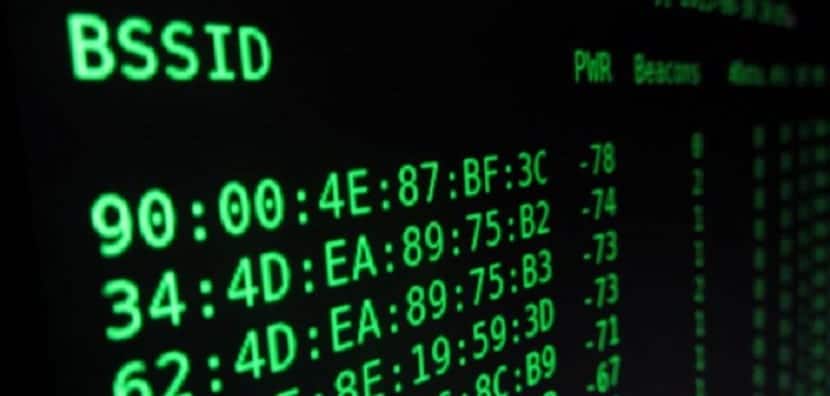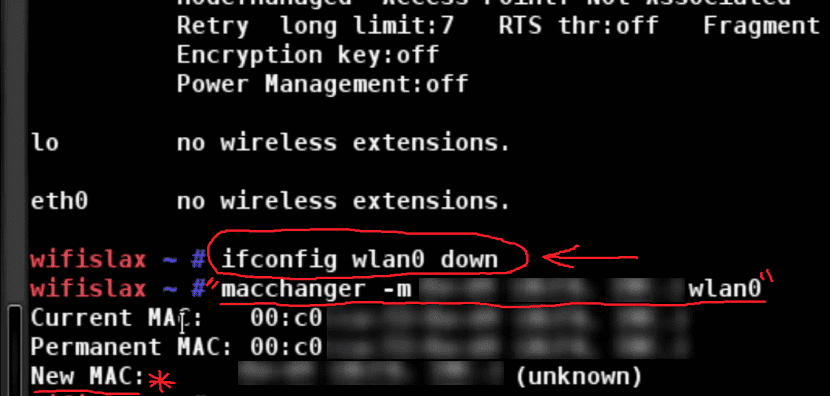
Una MAC address (Media Access Control) is the 48-bit unique identifier (6 blocks of two hexadecimal characters (4 bits)) assigned by the manufacturer to a piece of network hardware (such as a wireless card or an Ethernet card).
Se also known as physical address, and is unique for each device. It is determined and configured by the IEEE (last 24 bits) and the manufacturer (first 24 bits) using the organizationally unique identifier.
Sometimes we come to use a service that requires the registration of our MAC address, this in order to limit access.
Such is the example in routers in which we can make a white list or black list of MAC addresses in which access to the network can be granted or denied.
It is also a great utility when you want to protect your privacy. If you don't want to expose the real MAC ID when you are connected to a public WiFi access point, you can simply change it or simulate it with another MAC address.
In the case of Linux we have a powerful tool that can allow us to change our MAC address.
Macchanger is a free and open source application that allows us to view and manipulate the MAC address of our team every time it starts.
This application can be used from the terminal and also has a GUI (user interface).
How to install Macchanger on Linux?
macchanger is a utility that is available in almost all Linux distributions so its availability does not represent any problem.
To install it, just search for Macchanger with our preferred software manager.
As well we can install Macchanger from the terminal for this we must open one and execute the command according to the Linux distribution that we are using.
For install Macchanger in Debian, Ubuntu and derivatives of these just type the following command:
sudo apt-get install macchanger macchanger-gtk
While for Arch Linux, Antergos, Manjaro and derivatives we install the application with:
sudo pacman -S macchanger
If you are using Fedora, CentOS, RHEL or some system derived from these you can install with any of these commands:
sudo yum install macchanger sudo dnf install macchanger
In the case of openSUSE you install it with:
zypper install macchanger
How to use Macchanger on Linux?

To start using this application in our system, the first thing we must do after having installed it is to identify and know our MAC address, for this we must open a terminal and execute the following command:
ifconfig
And it will display a list of information where we can see our MAC address in it that will be in front of HWaddr.
Or also with this command:
ip link show eth0
Where eth0 is the network interface, which in my case is that.
And the address appears in front of link / ether xx: xx: xx…
To be able to change the MAC address of our equipment from the terminal, just execute one of the following commands according to what we need.
First we need to disable our network interface for this we execute:
sudo ifconfig eth0 down
Where eth0 is my network interface, this can vary a bit like wlanX, ethx, enpxx among others.
You can also do it with:
ip link set dev eth0 down
Done this now if we can proceed to use the application. In the case of creating a completely random completely MAC address, just run:
macchanger -r eth0
For randomize only device specific bytes of current MAC addressl (that is, if the MAC address was checked, it would still be registered as from the same provider), they run the command:
macchanger -e eth0
For change the MAC address to a specific value just type:
macchanger --mac = XX: XX: XX: XX: XX eth0
Where XX: XX: XX: XX: XX: XX is the MAC you want to change to
Finally, to return the MAC address to its original and permanent hardware value:
macchanger -p eth0
Y we re-enable our network interface with:
ifconfig eth0 up
Or also with:
ip link set dev eth0 up
Hello, I would like to ask a question about the MAC address.
I am doing an internship with VirtualBox and I have to configure the TCP / IP of two machines so that they communicate with each other. I have to do it with Windows and with Linux. The fact is that when doing it with Ubuntu I have not had any problem with the MAC address. The two machines had the same address and even so, when configuring it and doing the ping, it did not give me any error and I got the TTL time. The problem came when doing it with Windows because instead of the TTL, it came out: "destination host unreachable". In the end I realized that I had to change the MAC address of one of the machines. As much as I search, I can't find out why in Ubuntu I had no problems and in Windows I had to change the MAC address.
Thank you, greetings.